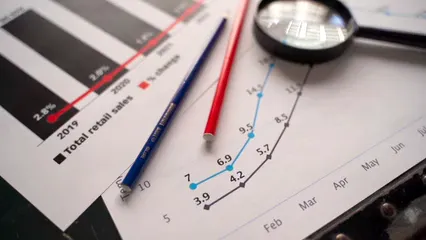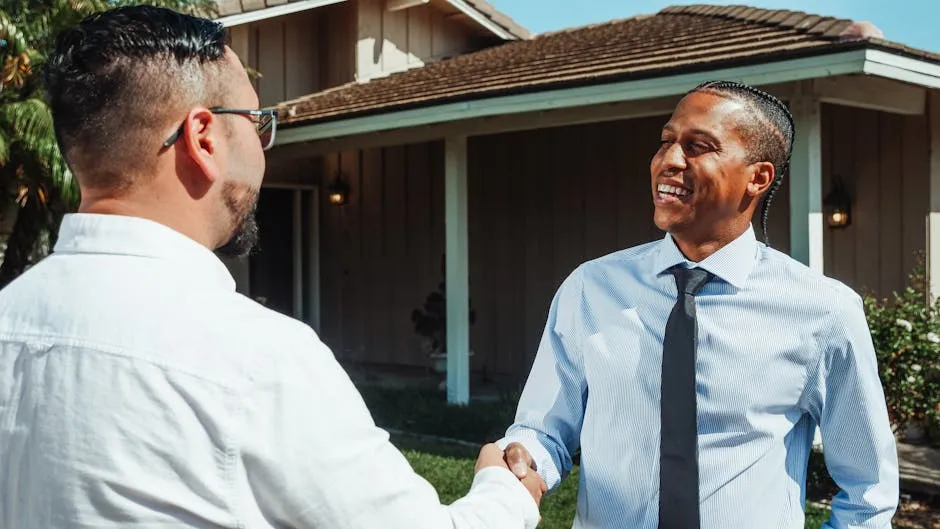Introduction
Cold calling is a sales strategy that involves reaching out to potential customers who have not previously expressed interest. Imagine the thrill of dialing a number, not knowing if someone will pick up or hang up. While it may seem daunting, cold calling remains a staple in the sales toolkit.
Understanding cold calling statistics is crucial for anyone looking to improve their sales efforts. It’s like having a secret weapon in your sales arsenal. These statistics offer invaluable insights into what works, what doesn’t, and how to refine your approach.
In this article, we’ll provide a comprehensive look at cold calling statistics, best practices, and insights for 2024 and beyond. Whether you’re a seasoned sales pro or a newbie, you’ll find something useful to enhance your cold calling game.
Before diving in, consider grabbing a copy of Cold Calling for Dummies. This book is an excellent resource for beginners looking to navigate the sometimes treacherous waters of cold calls.

Understanding Cold Calling
What is Cold Calling?
Cold calling is the process of reaching out to potential customers via phone, with no prior contact or relationship. The primary purpose? To introduce your product or service and spark interest. It’s like asking someone out on a date without knowing if they’ve even heard of you.
Unlike inbound sales, where customers reach out to you, cold calling requires proactive engagement. It’s often seen as a more challenging method, but it also presents unique opportunities.
If you want to refine your skills further, consider checking out The Art of Cold Calling: A Guide to Success. This guide will help you turn those awkward calls into valuable conversations.
The Evolution of Cold Calling
Cold calling has come a long way since its inception. Originally, it was just a simple phone call. Today, technology and social media have transformed the landscape. Now, sales professionals can research prospects using platforms like LinkedIn before picking up the phone.
The rise of digital communication has also changed buyer behaviors. More consumers are wary of cold calls, believing they could be scams. In fact, about 94% of consumers see unknown calls as potential fraud, highlighting the challenge cold callers face today.
However, despite these hurdles, cold calling remains an essential strategy. Statistics show that 69% of buyers are still open to cold calls, indicating there’s a light at the end of the tunnel for sales reps. With the right insights and strategies, cold calling can be a powerful tool for generating leads and driving sales.
To help you master the art of cold calling, consider the Ultimate Guide to Cold Calling. This book covers everything from techniques to mindset shifts that can make all the difference.

Key Cold Calling Statistics
General Cold Calling Statistics
Cold calling may feel like a daunting endeavor, but it remains a significant method in sales. Let’s kick off with some eye-opening statistics that highlight what’s really happening when sales reps pick up the phone.
First, let’s talk success rates. The average success rate for cold calling hovers between 2% and 5%. So, if you’re feeling disheartened after a few calls, remember, you’re not alone! It might take around eight attempts just to connect with a single prospect. Yes, eight! That’s like trying to win a game of telephone where everyone’s using different languages.
Now, here’s a kicker: about 80% of cold calls end up going to voicemail. So, if you’re leaving a message, be sure it’s engaging. Prospects are likely to be bombarded with unknown numbers, and they might assume it’s just another spam call. In fact, a staggering 94% of consumers think unidentified calls could be fraudulent. Yikes! It’s essential to stand out in this sea of skepticism.
Understanding cold calling statistics is essential for sales success. Learn more about cold calling statistics here.

B2B Cold Calling Statistics
When it comes to B2B (business-to-business) cold calling, the statistics take on a life of their own. A significant 57% of C-level executives prefer to be contacted by phone. That’s right; despite the digital age, these high-ranking decision-makers still appreciate the personal touch that a voice call provides.
And here’s a hopeful statistic for those dialing in: 82% of buyers are open to meetings initiated by cold calls. So, while it may feel like you’re throwing darts blindfolded, there’s a good chance your aim can be on point with the right approach.
Cold Calling Conversion Rates
Now, let’s dive into conversion rates. On average, cold calling conversion rates sit around 2-3%. However, factors like personalization can dramatically influence these numbers. When sales reps tailor their pitches to address specific pain points, they can see conversion rates skyrocket. Using data to understand your prospects better and speaking to their needs can increase your chances of success significantly.
Personalized approaches are key. In fact, salespeople who state their reason for calling see a 2.1 times increase in their success rate. That’s a big deal! If you can connect the dots between what you’re offering and what the prospect needs, you’ll transform cold calls from a chore into a valuable outreach method.
For those looking to craft the perfect pitch, consider checking out Sales Scripts: How to Write a Cold Call Script That Works. This book is a treasure trove of tips for creating engaging scripts that can improve your conversion rates.

Preparing for the Call
Researching Prospects
Understanding your audience is vital. Knowing their needs and preferences can set the stage for a successful call. It’s like showing up to a party in the right outfit. You want to fit in, not stand out for the wrong reasons!
Utilizing social media and CRM tools can provide valuable insights. Platforms like LinkedIn offer a wealth of information. You can learn about prospects’ backgrounds and interests, making it easier to strike up a conversation. It’s like having a cheat sheet before the big test!
To ensure you have the best tools for outreach, consider investing in CRM Software. This will help you keep track of leads, interactions, and insights, making your calls much more effective.

Crafting a Call Script
A successful cold call script has several essential elements. Start with a clear objective. What do you want to achieve? Next, include a strong opener. Your first few seconds matter. They can make or break your call!
Adapt your script based on the conversation flow. Flexibility is key! Listen actively and adjust your approach. If the prospect seems interested, dive deeper. But if they’re hesitant, pivot the conversation. Remember, it’s not a monologue; it’s a dialogue!

During the Call
Effective Opening Lines
Statistics show that starting with “How have you been?” can increase your success rate by 6.6 times! It’s a friendly icebreaker that shifts the vibe. People love talking about themselves, so why not give them the chance?
Using “we” statements can enhance engagement, too. Phrases like “We’ve helped others in your position” resonate well. It builds a sense of collaboration and trust. After all, who doesn’t prefer working with a partner rather than a salesperson?

Handling Objections
Common objections during cold calls include “I’m busy” and “I’m not interested.” These responses can feel like a punch to the gut. But fear not! There are strategies to overcome them.
First, pause and listen. Acknowledge their concern without rushing to respond. Then, ask clarifying questions. This shows you care about their needs. If they’re busy, suggest a follow-up time. If they’re uninterested, ask why. This can provide insights for future calls!

Timing and Frequency
When it comes to making calls, timing is everything. Research indicates that Wednesdays between 4 PM and 5 PM are prime time. In fact, calls during this window are 71% more effective in booking meetings compared to other times!
As for frequency, aim for 60-100 calls per day. While it might sound daunting, this number can significantly improve your chances of success. Remember, persistence pays off; that elusive “yes” could be just a call away!
To keep your focus high during those calls, consider using a Phone Headset with Noise Cancelling. It helps you focus on the conversation without distractions from the outside world.

Cold Calling Challenges and Myths
Common Misconceptions About Cold Calling
Ah, cold calling! The task that sends shivers down the spines of even the most seasoned sales reps. Let’s tackle some myths. First, many believe cold calling is utterly ineffective. While it’s true that the average success rate hovers around 2%, it’s not a total flop. Surprisingly, about 69% of buyers accepted at least one cold call last year. Who knew?
Another common misconception? Sales reps think they’re simply annoying prospects. While some people might feel pressured, 57% of C-level executives prefer phone contact. They appreciate personalized outreach, and that’s the key!
Now, sales reps often fear rejection. It’s like asking someone out at a bar who’s already had one too many. But here’s the silver lining: persistence pays off. Many buyers need multiple interactions before they say yes. In fact, 80% of sales happen after the fifth follow-up call. So, keep dialing!

Challenges in Cold Calling
Now, let’s discuss the real challenges. One major obstacle is poor data quality. If your contact list is riddled with inaccuracies, you might as well be throwing spaghetti at the wall. A staggering 62% of organizations rely on data that is 20%-40% incomplete or inaccurate. This leads to wasted time and missed opportunities.
Moreover, consumer perceptions of unknown calls are a significant hurdle. A whopping 92% of people believe unidentified calls are scams. This skepticism means sales reps face an uphill battle. That’s why clear communication is crucial. Salespeople should always state their reason for calling upfront.
For a deeper understanding of overcoming these challenges, grab a copy of Cold Calling Success: The Complete Handbook. This resource will equip you with the tools to tackle any challenge that arises.
In a nutshell, cold calling isn’t dead; it’s evolving. Understanding these challenges and debunking these myths can empower sales reps. Embrace the obstacles, refine your approach, and you might just find that cold calling can lead to warm leads and sales success.

The Future of Cold Calling
Integrating Technology
Fasten your seatbelts, folks! The future of cold calling is all about technology. AI and data analytics are revolutionizing the industry. With tools like CRM systems, sales reps can gather insights about prospects before placing a call. This means personalized pitches that resonate with potential customers. For instance, AI can analyze data to identify the best times to call, increasing contact rates dramatically.
Moreover, sales teams are leveraging automation. This allows reps to focus on meaningful interactions rather than mundane tasks. Tools like automated dialers can save time, letting salespeople engage in more conversations.

The Omnichannel Approach
But wait, there’s more! The omnichannel approach is the name of the game in modern sales strategies. Cold calling shouldn’t exist in a vacuum. Combining it with other methods—like email and social media—creates a well-rounded outreach strategy.
For example, following up a cold call with an email can reinforce the message and keep you top of mind. Social media, especially LinkedIn, can help you forge connections and warm up cold prospects. In fact, 82% of buyers research providers on LinkedIn before responding to outreach.
To ensure your calls are as effective as possible, consider using a Bluetooth Speakerphone for Conference Calls. This will help you maintain a professional atmosphere during group discussions and calls.
So, as we look ahead, it’s clear that cold calling will continue to be a vital component of sales. By embracing technology and adopting an omnichannel approach, sales teams can enhance their effectiveness and adapt to the evolving landscape. Cold calling is not just surviving; it’s thriving!

Conclusion
Cold calling is not just a relic of the past; it’s an essential tool in the sales arsenal. The statistics we’ve explored reveal a fascinating picture. For instance, about 69% of buyers are open to cold calls, and a whopping 82% of them accept meetings initiated by sales reps. These numbers show that, despite the rise of digital communication, the human connection forged through a cold call remains powerful and effective.
Understanding cold calling statistics helps sales professionals refine their strategies. By analyzing data, you can uncover trends that lead to better targeting, timing, and messaging. For example, knowing that the best times to call are typically between 4 PM and 5 PM can make all the difference. It’s like finding the sweet spot for your favorite coffee—just the right moment for maximum enjoyment!
However, success in cold calling doesn’t solely hinge on timing and statistics. Implementing best practices is crucial. Personalization is key; when sales reps tailor their pitches based on prospect insights, they significantly increase their chances of success. Remember, a well-crafted script and an understanding of your prospect’s needs can turn a cold call into a warm conversation.
Additionally, leveraging technology can enhance your cold calling game. AI and data analytics provide invaluable insights into prospects, helping sales teams identify the right people to contact and the best times to reach them. Automating routine tasks can free up time for more meaningful interactions, making your cold calling efforts not just efficient but also effective.
As you move forward, remember that cold calling is a numbers game, but it’s more than just statistics. It’s about building relationships, understanding your audience, and refining your approach based on what works. So, take a deep breath, pick up that phone, and dive into those conversations. Engage with your prospects more effectively, and watch your sales soar!

FAQs
Is cold calling still effective in 2024?
Yes, cold calling remains effective, especially when combined with other outreach techniques like emails and social media. The key is to integrate these methods for a more comprehensive approach.
What is the average conversion rate of cold calling?
The average conversion rate for cold calling is around 2-3%. However, this can improve significantly with high-quality leads and personalized approaches.
How many cold calls should you make in a day?
Sales professionals should aim for 50-100 cold calls daily. This range allows for sufficient outreach while maintaining quality interactions.
What is the best time to make cold calls?
The best times to make cold calls are typically between 11 AM – 12 PM and 4 PM – 5 PM on weekdays. These slots maximize your chances of connecting with prospects.
How long should a cold call last?
Successful cold calls usually last around 5-6 minutes. This duration is enough to establish rapport and convey your message without overwhelming the prospect.
Please let us know what you think about our content by leaving a comment down below!
Thank you for reading till here 🙂
All images from Pexels




